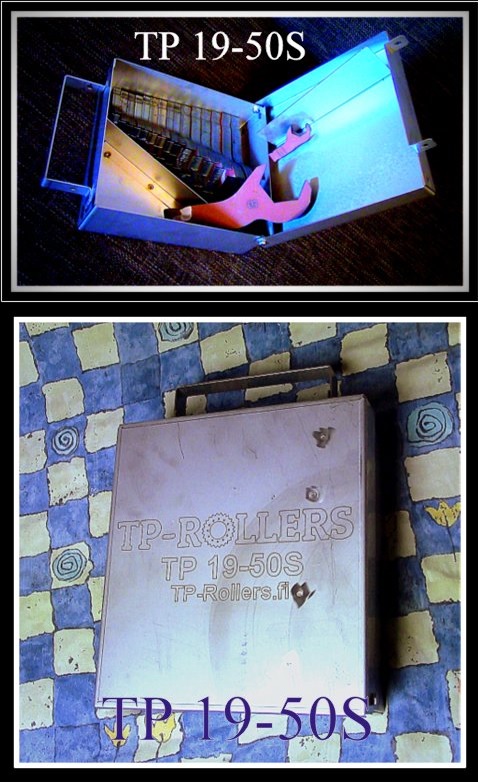Products
Harvester feedrollers
Availability 3/2016
Click here to download detailed list with weight and dimensions
Ponsse
H5, H53, H6/7/8
John Deere
H412, H413, H414, H415P, H415 BB, H480D/P, H745 /H754 / H758
Waratah
H412, H413;H414, H415P, H415 BB, H480D/P, H450, H460, H470
Komatsu
350, C93, 365
Kesla
RH25
Logmax
5000, 4000
Logset
TH65 / 75D, BRR
Rottne
EGS700 / 706
TP-Wrench & head
In sizes 19-50mm, 52-100mm


As an promise of quality we now offer 6000 hours / 3 years warranty for TP-feedrollers.
Warranty covers structure materials and normal wear and tear.
Warranty does not cover breaking caused by roller hitting rocks or tracks etc.
Roller bolt tightness must be checked after first 8 hours of use (300Nm)
Welcome!
Welcome to TP-Roller's homepageIn this site, you will find info about TP-Rollers and other TP-products, contact details and photos.
TP-Rollers sales
Finland Timo Penttimies & Uittokalusto OY
Other nordic countries, Germany, Poland, Slovakia, Switzerland, Austria, Hungary, Bosnia-Herzegovina GRUBE KG Germany and their local retailers
Great Britain, Ireland, Baltic countries, France, Czech Republic, Romania, Belgium John Deere Forestry and their local retailers
| Background on the Feeding Rollers |
